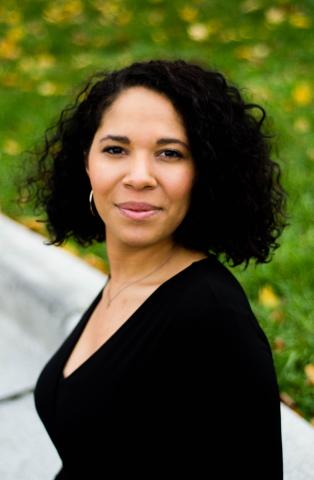Symphonie Fantastique
Stories of unrequited love, sorcery, vampires, and the supernatural are all wrapped up in the Lansing Symphony's 88th season opener! Strong passions and evocative imagery fill this evening of mystical music.
Conductor
Timothy Muffitt
Amanda Lynn Bottoms
Mezzo-Soprano
Der Vampyr Overture
Marschner
Overture to “Der Vampyr”
Heinrich Marschner (1795–1861)
Written: 1828
Movements: One
Style: Romantic
Duration: Eight minutes
In 1818, Mary Shelley published her novel Frankenstein. This book wasn’t an outlier. Partly as a reaction to the Enlightenment, the nineteenth century is full of examples of artistic depictions of the dark side. Francesco Goya produced his etching The Sleep of Reason Produces Monsters in 1799. In 1806, Dr. Faust sold his soul to the devil in Part One of Johann Wolfgang von Goethe's play Faust. Edgar Alan Poe wrote his frightening stories and poems in the middle of the century. There were rumors that the great violinist Niccolò Paganini got his supernatural skill by selling his soul. (The same was said of Liszt.) In Hector Berlioz’s Symphonie fantastique (also on tonight’s program) the protagonist, after overdosing on opium, dreams that he’s in hell. Carl Maria von Weber, the “father” of German romantic opera, made his mark in 1821 with Der Freischutz (The Freeshooter). The hero get’s his magic bullets from you-know-who. And Heinrich Marschner followed in 1827 with Der Vampyr.
Wait. Who? Tonight is probably the only time in your life that you will hear a work by Heinrich Marschner, even though he “was the most important exponent of German Romantic opera in the generation between Weber and Wagner.” Like many talented children, Heinrich’s parents recognized his musical gifts but discouraged him from choosing music as a career. He pursued liberal studies at the gymnasium in his hometown and then law in Leipzig, all the while composing music. He eventually became a music teacher for a nobleman in what is now Bratislava. From there he was appointed assistant to Weber at the opera in Dresden and essentially spent the rest of his life in and around opera in Leipzig and Hanover. (He also married two opera singers.) He ended up writing sixteen operas, chamber music, and many songs.
Marschner was quick to grab onto the popular new trend of “dark romanticism.” Collaborating with his brother-in-law Wilhelm August Wohlbrück who wrote the libretto, Marschner composed the first of his famous operas, Der Vampyr. (The nineteenth century was fascinated with vampires. Today, it’s zombies.) It’s based on a story by Lord Byron where a vampire tries to gain another year on earth by murdering three virgins.
The early romantics may have been captivated with the “dark side,” but they were still constrained by the musical traditions of the classical composers. You aren’t going to hear the scary music of Danny Elfman or John Williams in this overture by Marschner. Der Vampyr has the clarity of an overture by Mozart with the dramatic punch of Beethoven and the technical bravura of Weber.
©2017 John P. Varineau
Program notes by John VarineauEl Amor Brujo Suite
Falla
El Amor Brujo (Love, the Magician)
Manuel de Falla (1876–1946)
Written: 1915–1924
Movements: Six
Style: Spanish Nationalism
Duration: 24 minutes
As a teenager, Manuel de Falla wanted to be a writer, but when he turned twenty he decided instead to go into music. He entered the conservatory in Madrid and graduated in 1899. While in Madrid, he came in contact with Felipe Pedrell, who was also the teacher of two other great Spanish composers, Albeniz and Granados. Pedrell convinced Falla of the worth of Spanish traditions in music, and encouraged him to incorporate folk music into his own compositions.
Some of Falla’s earliest compositions were zarzuelas – a type of Spanish light opera somewhat akin to American musical theater. He wrote his first “serious” work for the stage in 1904, a short opera called La vida breve (The Short Life). Manuel went to Paris in 1907. For the next seven years he absorbed the music and techniques of the French composers Dukas, Debussy and Ravel. But it wasn’t a one-way street. French audiences and composers were fascinated with the music of Spain. Along with his friends Isaac Albéníz and Joaquín Turina, Falla helped champion the music of his native country. A substantial publishing contract with the firm Eschig allowed Falla to focus on his composing, but the outbreak of World War I made it impossible to continue living in Paris.
Back in Spain in 1915, Falla travelled throughout the country with Gregorio Martínez Sierra and María Lejárraga, a husband-wife theatrical team. During their travels, they met the great gypsy flamenco dancer Pastora Imperio. Falla learned much about gypsy and flemenco music from her and Pastora asked him to write a ballet for her. María Lejárraga wrote the scenario, basing it on an old Andalusian folktale. Falla spent three months writing El amor brujo (Love, the Magician). Unlike earlier works of his, he didn’t use actual Spanish folk tunes. The melodies were all his, but crafted in a way to make them sound “gypsy.” The piece premiered on April 15, 1915. Hours before the opening, Falla told a newspaper reporter, “We have done a rare and new work, which we do not know about the effect it may have on the public, but we have ‘felt’.”
One unusual aspect of the ballet El amor brujo is that it includes singing as well as dancing. Pastora Imperio was a well-known dancer and singer, but she couldn’t read music. No worries. She mastered Falla’s music with “the ease of a consummate solfègist (one who practices music-reading).” El amor brujo, tells the story of the beautiful Candelas who, now that her faithless husband is dead, now wants to return to her first love, Carmelo. The problem is that when the two are together at night, the former husband returns as a ghost. First he terrorizes them (Dance of Terror). Candelas draws a magic circle on the ground to exorcise the ghost with the Ritual Fire Dance. Unsuccessful at getting rid of the ghost, the couple has their friend Lucia perform a seductive dance to distract it while they exchange “the kiss of perfect love.”
Manuel de Falla’s music is essential to the Spanish presence in the world of “classical” music. It is also essential to the self-understanding of the Spanish themselves. As the composer Enrique Casal Chapí has said:
- continue listening to the Siete canciones populares españolas and El amor brujo . . . because nowadays we can do without a car, or other material comforts, but what is indispensable to us is everything that has contributed and still contributes to our formation and spiritual life, and the music Falla has written is included in all that.
©2017 John P. Varineau
Program notes by John VarineauSymphonie Fantastique
Berlioz
Symphonie fantastique, Op. 14
Hector Berlioz (1803–1869)
Written: 1830
Movements: Five
Style: Romantic
Duration: 49 minutes
When the twenty-one-year-old Hector Berlioz arrived in Paris from the provincial town of La Côte, he was as starry-eyed as any young man newly arrived in the big city. He was grudgingly following in his father’s footsteps to become a doctor―until he went to his first opera. “The pomp and brilliance of the spectacle, the sheer weight and richness of sound produced by the combined chorus and orchestra . . . excited and disturbed me to an extent which I will not attempt to describe,” he wrote in his Memoirs. “I hardly slept that night, and the anatomy lesson next morning suffered accordingly.”
Then Berlioz discovered that the music library of the Conservatory was open to the public. “It was the death-blow to my medical career. The dissecting-room was abandoned for good.” There were other important influences during those early years in Paris. He saw a production of Shakespeare’s Hamlet, in English. He probably didn’t understand a word of it, but “Shakespeare, coming upon me unawares, struck me like a thunderbolt. The lightning flash of that discovery revealed to me at a stroke the whole heaven of art, illuminating it to its remotest corners. I recognized the meaning of grandeur, beauty, dramatic truth.” Most importantly, he saw the English actress Harriet Smithson play the role of Ophelia. He was so smitten that he became what we would call a stalker. Berlioz did everything in his power to meet Miss Smithson and played the role of the lovesick artist.
A direct result of that ill-fated relationship was his Symphonie fantastique. Partly autobiographical, the rest stands as a hallmark of musical romanticism. It is a symphony with five movements, not the standard four. Each is tied together with a single melodic idea―what Berlioz called an idée fixe―which represents the heroine of the story. Berlioz included the following description in the program (which is why we call it a “program symphony”). He insisted that it was essential to the understanding of the work:
A Young musician of unhealthily sensitive nature and endowed with vivid imagination has poisoned himself with opium in a paroxysm of lovesick despair. The narcotic dose he had taken was too weak to cause death, but it has thrown him into a long sleep accompanied by the most extraordinary visions. . .
First Movement: At first he thinks of the uneasy and nervous condition of his mind, of somber longings, of depression and joyous elation without any recognizable cause . . . he remembers the ardent love with which the Beloved One suddenly inspired him . . .
Second Movement: In a ballroom, amidst the confusion of a brilliant festival, he finds the Beloved One again.
Third Movement: It is a summer evening. He is in the country when he hears two shepherd lads who play a pastoral duet. And then She appears once more . . .
Fourth Movement: He dreams that he murdered his Beloved, that he has been condemned to death and is being led to execution. . . . For a moment a last thought of love is revived–which is cut short by the deathblow.
Fifth Movement: He dreams that he is present at a witches’ revel, surrounded by horrible spirits, amidst sorcerers and monsters in many fearful forms, who have come together for his funeral. The Beloved melody is heard again, but it has lost its shy and noble character; it has become a vulgar, trivial, grotesque dance tune.
©2017 John P. Varineau
Program notes by John Varineau




